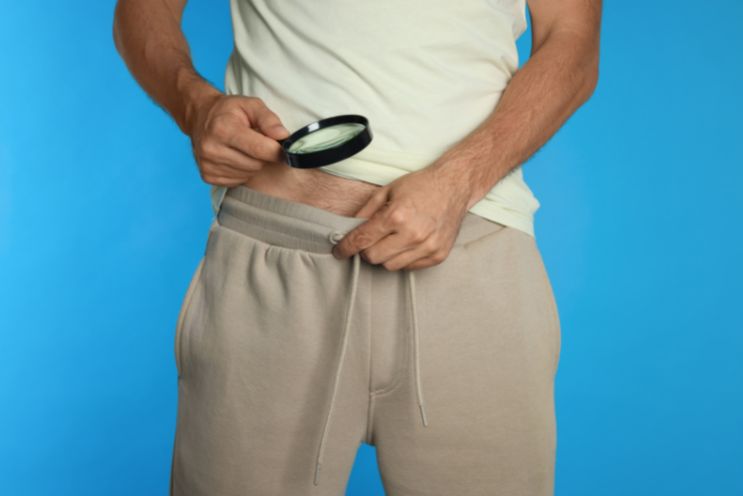Table of Contents
ToggleOverview
Got razor bumps? We examine whether the itchy red bumps in your bikini area could be an STD.
The unexpected pop-up of red, itchy bumps is an unwelcome sight on any part of your body. But the appearance of these pesky skin protrusions in some private regions can leave you wondering if your latest sexual encounter may have left you with a nasty parting gift.
Could you have an STD, or is the answer much more innocent?
We asked one of our resident experts, Dr. Honaker, to give us insider information on folliculitis. To finally clear up this burning question once and for all.
What is folliculitis?
If you have ever shaved your face, body, or head, you have likely experienced a bout of folliculitis. Moreover, those painful red bumps that often show up after a particularly close shave are typically called razor burn, but they are a type of folliculitis called pseudofolliculitis barbae.
Folliculitis is the inflammation of your hair follicles. This inflammation may be secondary to infection. This is usually caused when the hair follicle becomes damaged and is susceptible to infection from bacteria, fungi, and viruses.
In addition to a close shave, hair follicles can be damaged by restrictive clothing, friction, wearing tight hairstyles, and scratching the scalp. Moreover, this activity leaves your skin vulnerable and can increase your chances of those little red or flesh-colored bumps appearing.
Who is at Risk?
Sadly folliculitis can affect almost anyone at any time. In addition, even rarer types of folliculitis can affect babies. This type is called eosinophilic folliculitis, and unlike more common types of folliculitis, it does not occur due to external damage but internal changes to the body. This type is often associated with persons with compromised immune systems due to HIV/AIDS, diabetes, and some cancers.
While folliculitis can strike just about anyone, some factors can put you at a higher risk:
- Having dark or coarse, curly hair
- Having acne or dermatitis
- Regularly soaking in public hot tubs, spas, or heated pools that lack maintenance.
- Using improper shaving techniques
- Being on long-term antibiotic care for acne
Hot Tub Folliculitis
Hot tub folliculitis is a skin condition where a bacteria which thrives in warm wet conditions infects the lower part of the hair follicle. This type of bacteria can survive in chlorinated water and, while it prefers wooden tubs, can be present in almost any body of warm water that is improperly treated.
Also, this type of folliculitis causes small red pinprick-type bumps, often on the skin covered by your bathing suit (where bacteria can get trapped.)
Learn more about hot tub folliculitis.
How is Folliculitis Transmitted?
While folliculitis is not contagious, the infectious agent causing the folliculitis may also transfer. In simple terms, if you acquired folliculitis through a virus, bacteria, or fungus, you may be able to share that with another body.
Therefore, if you have folliculitis, it is essential not to share:
- Razors
- Towels
- Face cloths
Washing these items between each use is also essential so as not to reinfect yourself. The infectious agent can also transfer through close skin-to-skin contact. While the transfer is not only due to sexual contact, it does not exclude it. While most folliculitis around the genital area is because of ingrown hairs, this does not always include folliculitis found on the buttocks.
Is it Folliculitis or Herpes?
While any bumps popping up in your genital or anal area will likely get your heart pumping, there is a chance that your condition is not an STD but a case of inflamed hair follicles.
Herpes and folliculitis can be similar in appearance and easily confused.
What is Herpes?
Herpes is a common STD which transmit through direct sexual contact with an infected person. It is more common among women, and many infected people are unaware they are carriers of the virus as it is often asymptomatic because of its lack of signs and symptoms.
Herpes is caused by the Herpes Simplex Virus (HSV). There are two different strains of this virus.
HSV 1– This virus affects the lips and eats away at the lip tissue. It usually begins with a tingling sensation and then develops into painful blisters and sores around the mouth.
HSV 2-This type of virus affects the reproductive area and forms single or groups of blisters filled with fluid that, once erupted, are highly contagious. Exposure to this virus may also cause oral herpes.
While both folliculitis and herpes can cause fluid-filled bumps, there are ways to tell the two conditions apart.
| Symptom | Herpes (HSV 2) | Folliculitis |
| appearance | Blisters filled with fluid | Pimples filled with pus |
| Where is it located? | In the genital area | All over the body |
| How does it feel? | Painful | More likely to be itchy |
| Discharge | Clear or yellow fluid | Pus |
| Scarring? | Not usually | Often leaves scars |
A Better Way to Know for Sure
While tackling your skin ailment may feel embarrassing, there is an easy way to do it now. Also, you don’t need to make an appointment to see one of our doctors. In fact, at Your Doctors Online, you can connect with one of our medical doctors simply by downloading our app.
Furthermore, there is no need to make an appointment and sweat it out in the waiting room. In addition, answer your skin queries as pain-free as possible and connect with one of our knowledgeable MDs.
So what are you waiting for? It’s time to banish that itch and address those bumps. Get the power of better health care in the palm of your hands with Your Doctors Online. Try us for free today.
FAQs About Folliculitis Answered by Your Doctors Online
Folliculitis isn‘t a sexually transmitted infection. Although in some cases, it may transmit via close skin contact.
Folliculitis is usually not contagious. Additionally, folliculitis occurs when there is damage to hair follicles. The irritated hair follicles result in an infection. The infection can be due to bacteria such as Staphylococcus aureus (staph).
Folliculitis can sometimes mistake for herpes. The red bumps/pimple can sometimes appear as pus-filled and painful clusters.
There have been unusual presentations of papular rash that classify as cases of syphilitic folliculitis.







